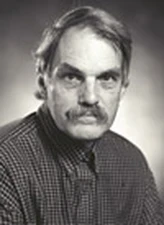Tammo Steenhuis

The 2005 Henry Darcy Medal is awarded to Tammo Steenhuis for his outstanding contributions to understanding the processes that govern contaminant movement in rural watersheds.
Tammo Steenhuis was born in 1945 in Groningen, the Netherlands. He did his undergraduate work at the Agricultural University, Wageningen, where he received a M.S. in Irrigation and Drainage Engineering. In the early seventies, he moved to the United States of America for graduate studies at the University of Wisconsin, Madison. In Madison, he received his second M.S. (1975) and his Ph.D. (1977). After his Ph.D., he went to Cornell University in Ithaca, New York, where he now holds the position of Professor in Soil and Water Engineering.
An important part of his legacy is the large number (>60) of graduate students who passed through “his” Soil and Water Laboratory. He always encouraged his graduate students to address research topics with a direct link to current water resource management issues. He instilled in his students a clear sense of the complementarity of theoretical and experimental innovations. With his graduate students, he was also involved in research projects in many developing countries such as The Philippines, Ethiopia, Ghana, Mali, Rwanda, and Zimbabwe. In these overseas projects, process-oriented research on the hydrological behavior of tropical watersheds and wetlands was the main theme. For over a decade, the Soil and Water Laboratory has also been the setting for the “Research Experience for Undergraduates” program, in which he introduces junior students to the fun and frustration of hands-on experimentation.
Professor Steenhuis has over 150 publications in ISI-rated peer reviewed journals, covering a broad range of water resource issues. His main scientific achievements concern the study of pollutant movement through rural watersheds. His often-cited work on preferential flow through structured soils from the early nineties explained why pesticides were found in groundwater, even though standard percolation theories could not predict this. Also other forms of preferential flow, such as funnel flow and finger flow, were addressed in later research. In recent years, much of his research focuses on variable source area hydrology (VSA). He showed how the often-used empirical SCS-curve-number method actually can be explained on the basis of VSA. His interest in VSA also extends to measurement and modeling phosphorus and cryptosporidium movement from saturated areas in the New York City Watershed, which are potential threats to the drinking water supply. With this broad range of activities, Tammo Steenhuis shows the research community that the study of issues relevant to society can be scientifically exciting and rewarding.
